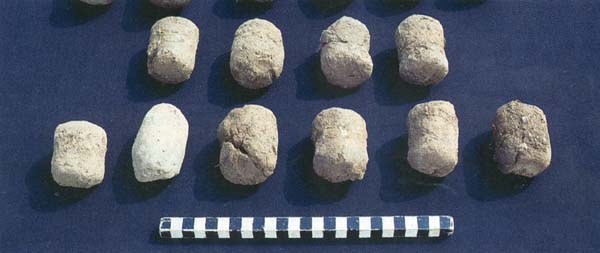Image Details

Carl Andrews, courtesy Leon Levy Expedition
Excavators of the Philistine city of Ekron (Tel Miqne) also found small cylindrical objects very similar to those at Ashkelon. Thinking that perhaps they were clay writing tablets of some kind, both teams of excavators were hoping to find the first.ever examples of Philistine writing on these cylinders, but soon had to settle for a more mundane explanation of the objects’ function: Tiny remnants of fibers, not visible to the human eye but found in the dirt nearby, indicated that the small clay objects were loomweights used in weaving. Their shape–pinched at the waist and not perforated–argues for a Mycenaean Greek origin for the Philistines: While perforated loomweights were common elsewhere, unperforated weights such as those at Ashkelon and Ekron have been discovered in Cyprus at Kition and Enkomi (both known to have been settled by the Sea Peoples of Mycenaean Greek origin) and indeed even in Mycenae itself.
